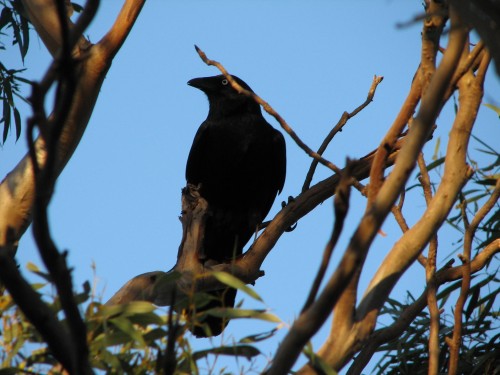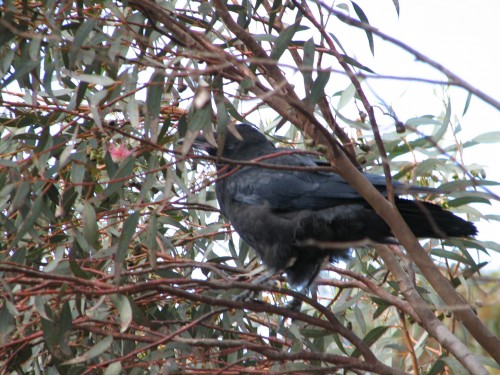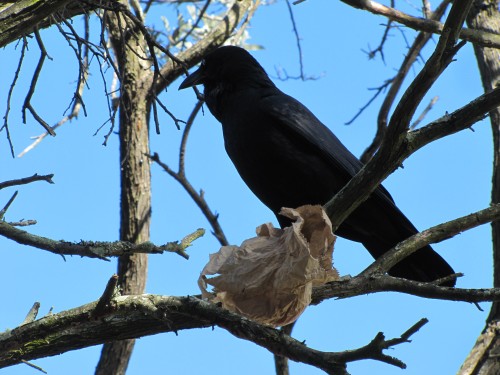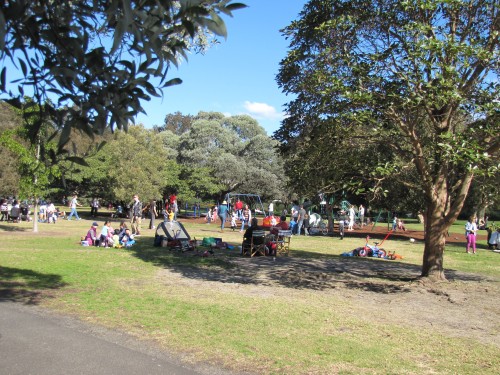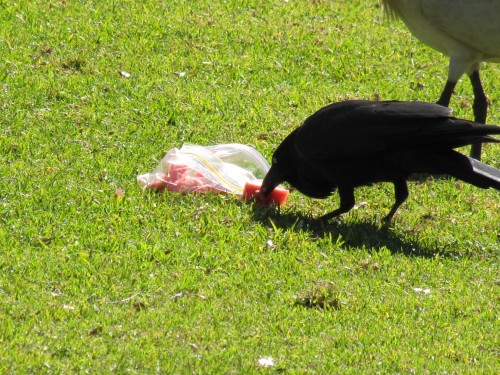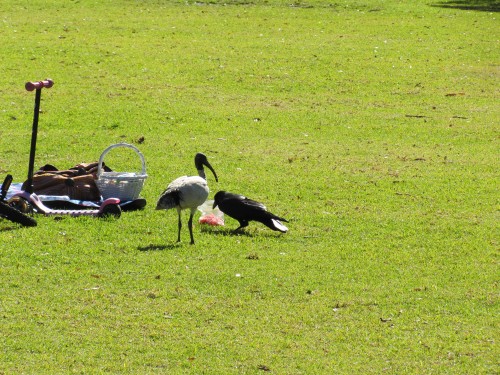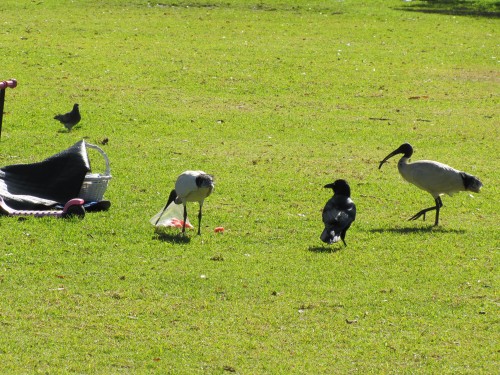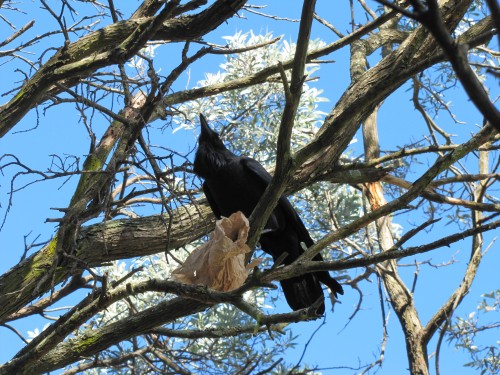Being watched by Little Ravens
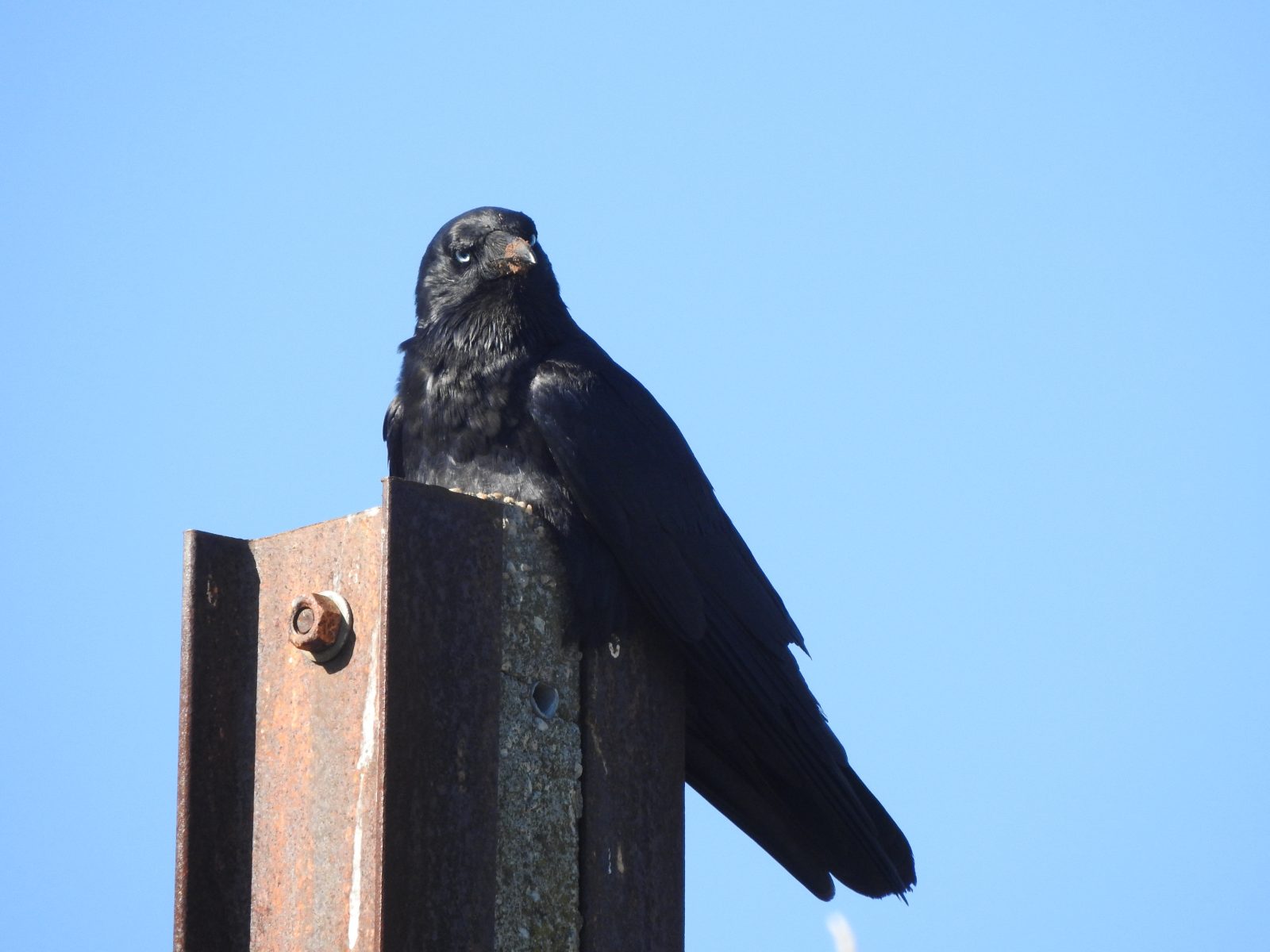
They are watching me
Ever had the feeling that someone is watching you?
I guess that feeling is common to most people. Have you ever had the feeling that an animal or bird is watching you? That is a very common feeling, I’d say. Dogs, in particular, have an uncanny way of watching people eat, for example. They always seem to know when there is food around.
Ravens nesting
Last month I was aware that the resident Little Ravens in my garden and five-acre block have been nesting. I observed them carrying sticks to a tall tree near my driveway, a spot which gives them a good lookout over the surrounding land. I had just taken some photos of the flowers of some native Australian plants in my garden when I spotted the Little Raven shown in today’s photos (above and below).
Keeping an eye on me
The photos almost look like the raven is watching me carefully, making sure that I go nowhere near the nest. Over the few weeks, before these photos were taken, I walked past the nest tree many times. At no point did the ravens call out a warning, or swoop me or anything. I just went about my business, and they continued with their nest building.
I have been away from home travelling for the last two weeks so I don’t know whether their eggs have hatched. I will still be away for a while so I expect to get home to find several young ravens begging for food.
Good birding,
Trevor
Further reading:
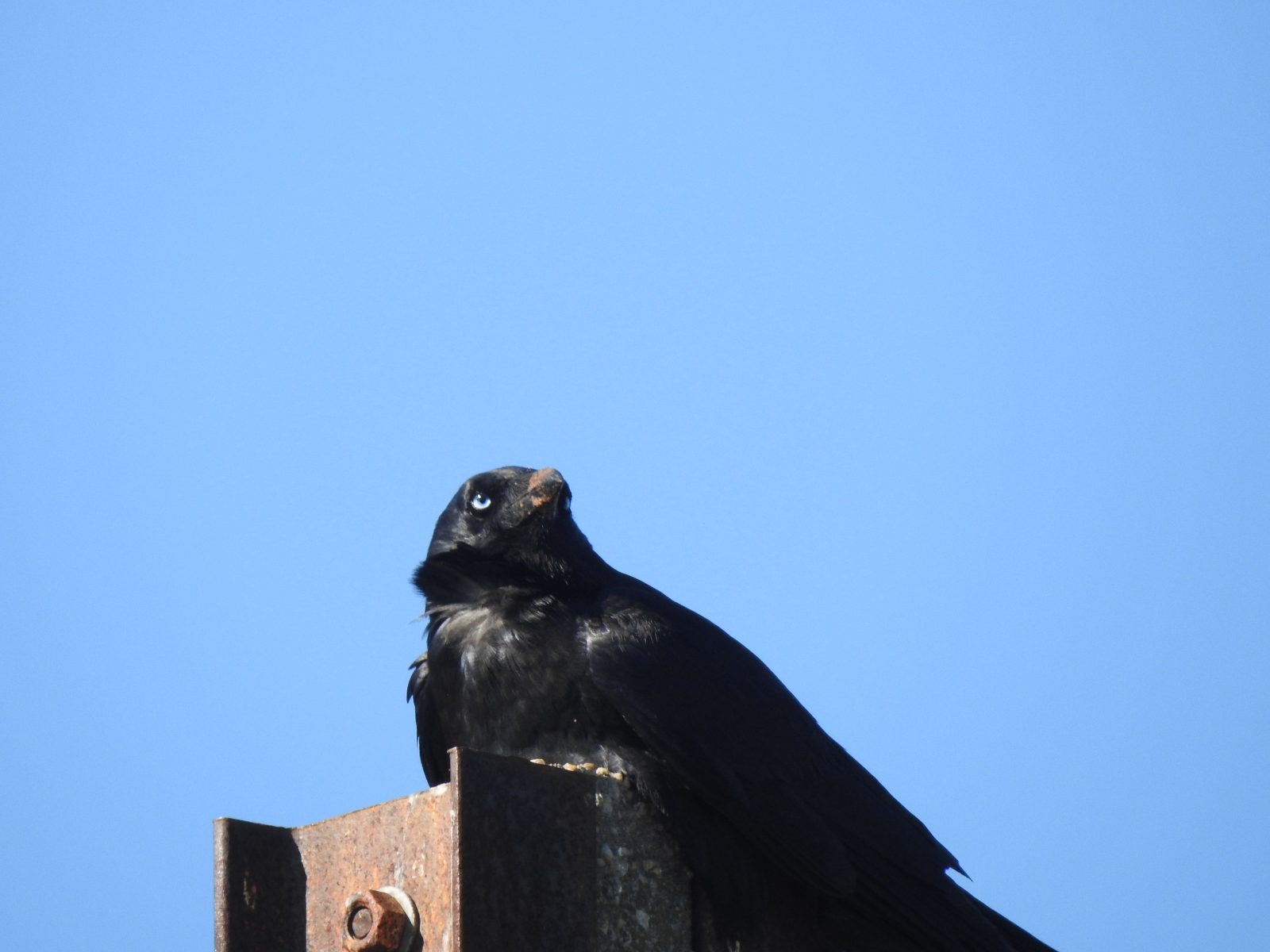
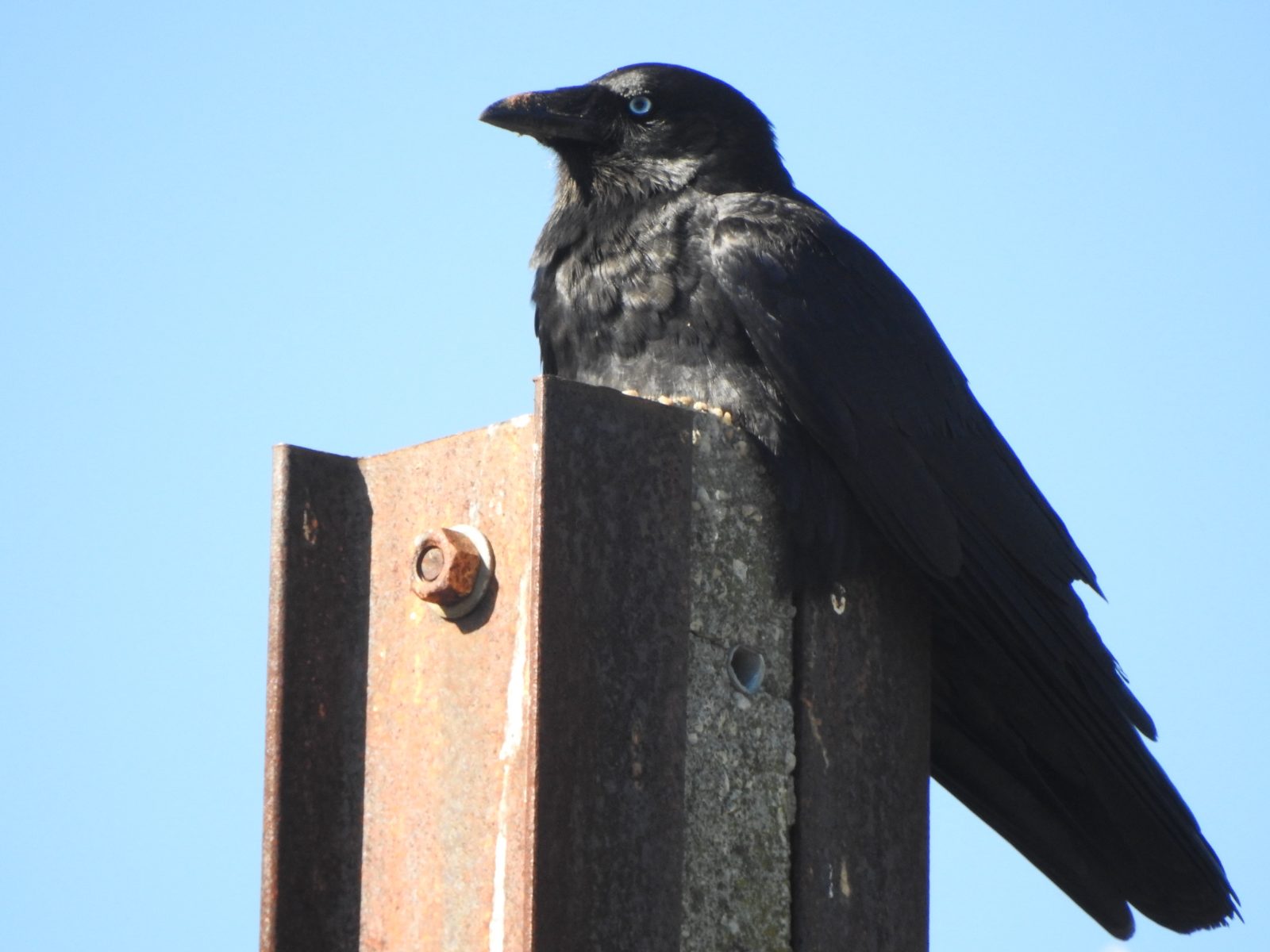
Annoyingly noisy ravens around our house
Over the last few weeks, I have been intrigued, puzzled and just a little annoyed.
Intrigued
I have been intrigued by all of the Little Ravens in our garden, on our five-acre property and along the nearby roadsides. While we only ever have two to five ravens at a time on our block of land, there would have to be at least 50 to 80 in the locality, perhaps more than that within a kilometre of our house. Obviously, there is plenty of food for them, as well as plenty of nesting sites. There is quite an extensive mallee scrub a few hundred metres just to the west of us.
Puzzled
I am puzzled because I am not sure what they are up to at present. Almost every morning this year I have heard large numbers of the local ravens constantly calling. It is usually from just after first light at around 6:30 am up until around 9 am and sometimes a little later. After that, there is just the occasional call as one or two fly overhead, or when they land in one of our trees. I have no idea why they are all calling, or why it stops after a while.
Annoyed
I have also been annoyed with the local Little Ravens, not only because I am puzzled by this behaviour, but it can get a little tedious after an hour or so of this calling, calling, calling. Normally, bird calls do not easily annoy me, though I will concede that if we had 500 Little Corellas wake us up every morning I would definitely change my mind. Thankfully that does not happen, though the local flocks of Galahs can sometimes be rather raucous, though they tend to fly overhead at sunset rather than at dawn.
Dilemma
I, therefore, have something of a dilemma. What are they doing? Why are they calling so incessantly?
I guess I will never know – unless I do an intensive field survey over many weeks in the field when I’d rather be in bed, or reading the paper.
I guess I could always try to learn how to speak Raven.
Good birding,
Trevor
Further reading:
Clever crows and a bossy ibis
Earlier this year we spent just over 4 weeks visiting our son and his family in Sydney. Over recent weeks I’ve shared some of the birding experiences we had while there, and when we weren’t on grandparent duties. On the very last day we had a family picnic at Centennial Park (see photo above). Some of our son’s friends were also present and the weather was brilliant; bright sunshine and just a hint of a breeze.
Over the course of the afternoon I managed quite a nice list of the birds observed in the park, including a few flying overhead. The most prominent in-your-face species were the usual suspects: Noisy Miners, White Ibis and Common Mynas. We had to be on guard all the time and some of our friends’ biscuits were snatched from packets within a metre or two from where we sat.
One species I didn’t expect to join this thieving group was the local crows, or more precisely, Australian Ravens. Now I have known that crows and ravens are sneaky, opportunistic thieves since the days when I grew up on the family farm in the mallee districts of South Australia. The local Little Ravens thought nothing of snatching a few eggs from our laying hens and ducks. On this picnic, however, I saw them in a different light; they are very clever.
In the photo above I’ve captured an Australian Raven “red handed” in the act of stealing some food from someone’s picnic. The bird was clever enough to know what was food, how to get it out of the basket and even how to open the plastic bag to get at the food. I am not sure what the food is – perhaps some cut up watermelon.
Within a few seconds, the successful heist was noticed by several White Ibis patrolling the picnic area. In the photo above the raven was still in control of the stolen food, but the ibis was about to take over. They are the “bully boys” in this situation, one that is repeated in many picnic grounds throughout eastern Australia.
It wasn’t long before an ibis had taken over eating the human picnic food (see photo above). Within a very short time several other ibises joined in the feast. Even a Rock Dove (feral pigeon) comes over to see if it can get into the act (see above, top left corner of the photo).
The raven wasn’t to be outsmarted, however. It went to another picnic spot nearby, rummaged through the human food delicacies and came up with something edible in a paper bag. To minimise the chances of being noticed and being bullied out of its catch, it flew to a nearby tree. There it was successful in holding the paper bag against the branch, opening it up and getting at the food (see photos below).
Very clever.
Observe the feathers (called hackles) on the throat. This helps identify this bird as an Australian Raven.
Little Ravens nesting
During my recent stay in bed with the flu I had a good view through the window of a part of our garden. In the fog of my illness I was pleased to be able to view a few birds that flew past the window, or those that settled in the bushes or trees within view.
On several occasions I noticed two very industrious Little Ravens at work. They were busy pulling fine strips of bark off the trucks of several bushes and trees. As they stuffed their beaks full of bark they looked as if they had suddenly grown a handlebar mustache!
With this beak full of bark they flew off over the road. Nesting?? I wonder. I haven’t recovered enough from the flu to go searching for the nest in the cold, wintery and showery weather we are having. It’s quite possible, however, for it is about now that many of our birds start building nests ready for the spring.
Early morning walk
I’m just back from an early morning walk. It was about 15C, crisp fresh, no breeze and cloudless. A perfect morning for a walk.
As I was going along I was aware of several dozen Little Ravens calling nearby. I’ve been aware of many ravens calling near our home over the last week or so. It’s something they tend to do several times a year. They will gather in large numbers, often 30 – 50 or more and commence calling raucously for ten or twenty minutes or more. After a protracted chorus of their calls, especially near the house, one can feel a little annoyed; it can be a penetrating call up close.
I also observed about a dozen Crested Pigeons sitting on the power lines or feeding on the ground. Several of them were giving their elaborate bowing, bobbing and tail fanning display to prospective mates. This species seems to be always breeding around here. Probably why there’s a growing number of them.
We occasionally have lorikeets land to feed in the trees in our garden but more often they just fly over, very rapidly and very noisily. This morning a flock of 10 Purple-crowned Lorikeets went screaming overhead as I walked along, did a 360 turn wheeling around to check me out (or maybe the mallee tree on the side of the road) before streaking off to find another tree in blossom. It’s like having a miniature squadron of fighter jets fly over at close range. The photo below shows a related species, the equally noisy Musk Lorikeet which we also get here from time to time.
